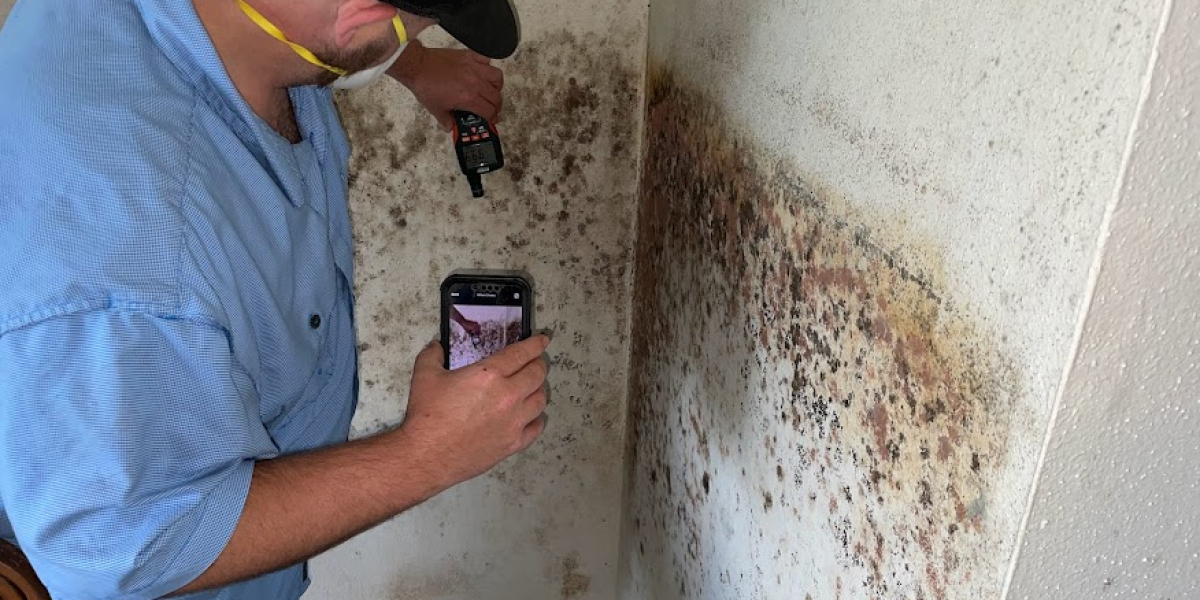How Does Surface Mould Inspection in Canberra Identify Moisture Problems?
Mould development in residential and commercial properties is usually indicative of hidden moisture problems. Left undetected and untreated, excess moisture causes chronic mould infestation, property damage, and health hazards. Surface mould examination in Canberra helps detect concealed moisture issues that result in mould growth. Through meticulous surface examination, experts can assess the level of mould contamination and identify areas of excessive moisture.
Why Does Mould Growth Mean Moisture Problems?
Mould needs moisture to develop, and the appearance of mould on surfaces typically indicates a current or previous water problem. The most common sources of moisture problems that cause mould are:
Leaks in Plumbing or Roofing – Leaking pipes, roof leaks, and defective plumbing can bring excessive moisture into walls, ceilings, and floors.
Condensation Build-up – Poor ventilation can cause condensation on windows, walls, and ceilings, leading to damp conditions that encourage mould growth.
High Humidity Levels – Excess humidity in indoor spaces can create a moist environment where mould thrives.
Water Damage from Flooding – Floods and water intrusion incidents leave behind moisture that, if not properly dried, can lead to long-term mould problems.
As mould is usually an outward indicator of moisture problems, a surface mould inspection in Canberra is a sound method of identifying and fixing the underlying problems.
How Surface Mould Inspection Identifies Moisture?
Several methods are employed in a surface mould inspection to detect moisture issues in residential buildings. Below are the methods professionals use to identify and determine the presence of moisture problems during inspection:
1. Visual Inspection of Affected Zones
Inspectors perform a thorough visual inspection to detect mould growth on walls, ceilings, floors, and surfaces. Visible patches of mould, water spots, discoloration, and peeling paint are common signs of excessive moisture. The location and pattern of mould determine if the problem is caused by leaks, condensation, or humidity.
2. Surface Testing with Moisture Meters
Infrared thermal scanning is an non-invasive method of finding concealed moisture behind walls, ceilings, and floors. Moisture stores heat in a different way than dry surfaces, and inspectors can identify cooler, wet spots that are often not apparent to the naked eye. This cutting-edge technique enables them to find water intrusion problems before they cause widespread mould growth.
4. Hygrometers to Monitor Indoor Humidity Levels
Excessive humidity provides the ideal environment for mould growth. Inspectors measure relative humidity within a building using hygrometers. If humidity levels are above 60%, mould growth is more likely. Checking humidity indicates if improvements to ventilation or dehumidification need to be undertaken to manage moisture content.
5. Surface Sampling to Determine Contamination
Surface sampling is done in certain instances to determine the level of mould infestation. Samples are taken from the affected regions using swabs or tape lifts, which are then subjected to laboratory testing. Although this test mainly verifies the existence of mould, it also helps determine whether the moisture problem persists or has been addressed.
Typical Locations Where Moisture Issues Are Encountered
In a surface mould inspection in Canberra, experts usually detect moisture problems in the following locations:
Bathrooms and Kitchens – Inadequate ventilation, steam condensation, and leaky pipes predispose these sections to excessive moisture.
Basements and Crawl Spaces – Poor air circulation and ground moisture may result in wetness and mould growth.
Walls and Ceilings – Water leaks from pipes, roofs, or condensation behind walls usually result in mould issues.
Windows and Doors – Improper condensation or sealing on glass surfaces can be a cause of moisture-related issues.
Air Ducts and HVAC Systems – Condensation in the ductwork along with high humidity levels provide a setting where the mould will spread throughout a property.
How to Prevent Moisture Problems After an Inspection?
After assessing moisture problems, preventing them from growing can keep an environment mould-free. Some of the main prevention strategies are:
Plugging Leaks in a Timely Manner – Repair leaking plumbing fixtures, roofs, and pipes to avoid moisture accumulation.
Enhancing Ventilation – Utilize kitchen and bathroom exhaust fans to minimize condensation and maintain humidity levels.
Employing Dehumidifiers – Keeping indoor humidity levels at or below 50% avoids creating wet environments that promote mould growth.
Providing Proper Drainage – Clean gutters and provide proper water drainage around the property to avoid water entry.
Sealing Cracks and Gaps – Sealing windows, doors, and foundations properly prevents moisture from entering.
These measures can go a long way in minimizing the risk of future mould issues following an inspection.
Final Thoughts
A Canberra surface mould inspection is an essential process to detect concealed moisture issues that lead to the growth of mould. Professionals use sophisticated equipment such as moisture meters, thermal imaging cameras, and hygrometers to identify excessive moisture in walls, ceilings, and floors. Detecting mould in its initial stages assists in preventing reoccurrence, saves indoor air quality, and maintains property longevity.

.jpg)
.jpg)
Comments
Post a Comment